Product is no longer working in a silo and engaging regularly with just UX or development. You're increasingly being asked to work with a broader set of cross-functional stakeholders across the business. Everybody has input, everybody has feedback.
That's meaningful because cross-functional collaboration and communication happen when people with different skill sets and different OKRs and KPIs come together to focus on a greater goal. They harness additional talents that might exist outside your product organization with different types of expertise.
As a product manager, being part of this cross-functional team gives you the opportunity to increase your effectiveness and your efficiency. When done well, this cross-functional collaboration can support: Decreases in churn rate, increase retention, increase in product signups, activations and MRR business growth.
The challenges associated with cross-functional communication
However, there are also some drawbacks to cross-functional communication. As a PM organization, how do we manage productivity in a world where suddenly everybody is involved and wants to participate?
Lots of people are scheduling a lot of meetings. In the United States, 55 million meetings are held each week, that's at least 11 million per business day and over 1 billion meetings per year. The average employee participates in at least eight meetings per week, with 30% of workers reporting they spend over five hours per week in meetings.
This survey shows that 71% of those meetings are considered unproductive. You have a group of smart and talented people in a meeting, without an agenda or without any plan for the conversation which leads to an estimated $37 billion and 24 billion hours lost per year due to unproductive meetings.
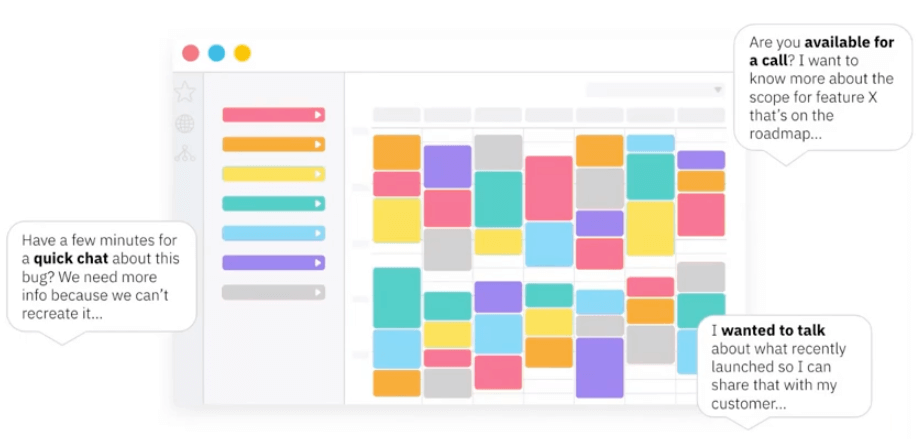
This may or may not look familiar to you but when I see a meeting request that pops up on my calendar, about having a quick chat or somebody wants to have a quick sync on the roadmap, my heart sinks.
These are the kinds of questions product managers get all the time, especially as our roles become more cross-functional and visible. However, one of the things we do is share a link to it on notion or Confluence or maybe you’ve presented it at your team meeting last week, and so a lot of these meetings could realistically be emails.
How to be efficient as a cross-functional stakeholder group
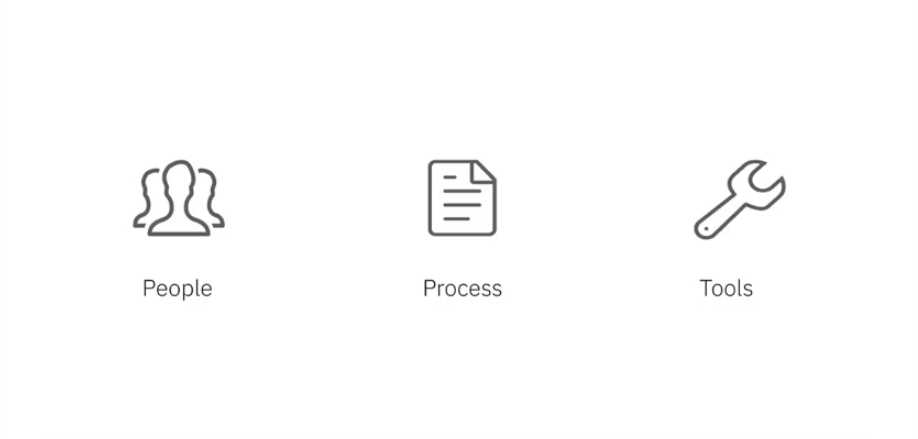
When it comes down to your calendar, don't expect that a single action will instantly land you in a paradise of uninterrupted focus time. As the product organization assumes a higher profile role in driving some of these cross-functional relationships, there's an opportunity to think about how we maintain our sanity and our efficiency to make sure we're able to keep focused on what matters. In my experience, it's a combination of: people, processes and tools.
Rallying people around a common goal
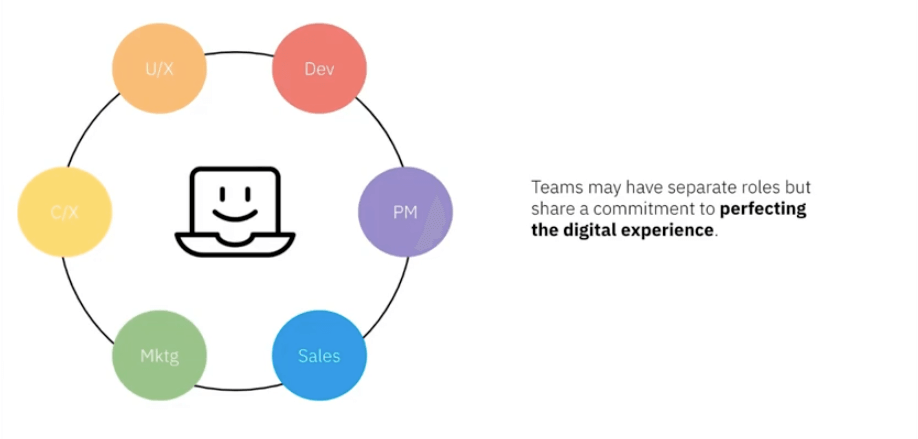
First, when it comes to people, it helps to have everyone aligned around a common goal.
- Is there a common use case?
- Is there a common strategic initiative everybody is focusing on as a business?
Product managers are problem solvers. Product sits at the nexus of all these different functions with unique points of view, each with a differing set of priorities, but we're all rallied around a common goal (in our case the goal is perfecting the digital experience). So how do we communicate our progress to that goal and keep everyone aligned?
Process: How we get - and stay - on the same page
A roadmap is a living document. Sometimes the updates stay in your head, you're moving really quickly or a sprint is proving to be particularly challenging, you've got a lot of different obligations you're trying to meet, and you're also trying to incorporate user feedback so you may not be updating every piece of information on a roadmap or you may not even have that view available to the cross-functional stakeholder group.

What I found to be really effective is to have a commitment to the organization of publishing once a month and syncing once a month getting together as a group to evaluate and talk about the three phases (represented above), Alpha, Beta, and GA.
You also have an area on the left that includes items in staging and in discovery. These are valuable for cross-functional stakeholders because often they are looking to see their items represented there.
The GA and the beta sections are very important for product marketers, as we look to align go-to-market resources for all the different products the product management team is bringing to market.
The bottom is where we put our enhancements. We break them out separately from the new initiatives which are listed along the top because having them along the bottom ensures we're still aware of them as a broader stakeholder group and we have an opportunity to discuss them.
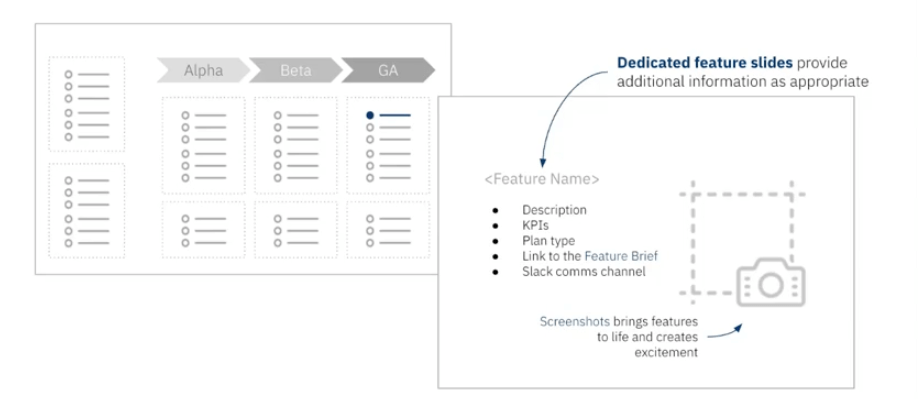
This roadmap is so effective because it allows us to meet the needs of multiple stakeholders, but it's not just an overview, it's also detailed. Each of the items in the roadmap has a link to additional detail, it can include use cases, where it is in cycle, or if we have mockups. It empowers people who are interested in learning more detail about a particular thing to find information without necessarily having to put a 15-minute meeting on our calendars.
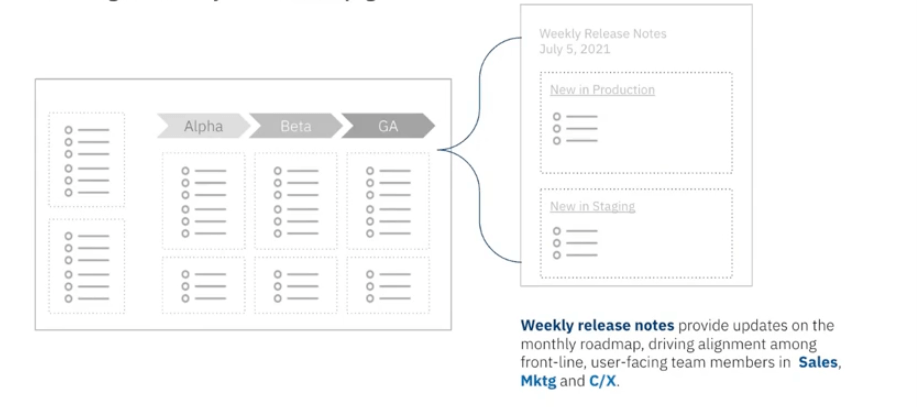
In addition to a monthly roadmap, we also publish weekly release notes. Again, this is a formal supplement to the work that's already underway, but it’s a readout for the broader stakeholder group of all the things we're shipping in a given week. Sometimes that list is short, sometimes it’s long, but it's always valuable for the larger group to get up to speed on what customers may be seeing and what prospects may see as part of a demo environment. We want everybody to be informed.
At my company, it has lived in different places and formats, like Google Slides or Notion and it's always evolving, but we have this commitment to giving the people a process they can trust where they're seeing the same information from us in a similar format and they know that every month we update the roadmap and every week they're gonna get release notes.
That helps us be more efficient because building trust in the process can circumvent a lot of the ad hoc meetings that appear on your calendar. It’s truly valuable across all stakeholder groups to have a process that can be trusted, is transparent and consistent from month to month. It's a big part of aligning cross-functional collaboration.
Tools: using data to validate and inform priorities
Activities and communications are powered by the same, accessible information including quantitative data and qualitative detail.
It's very important to have data-driven decisions. As a cross-functional stakeholder group, we use data to validate and inform priorities, share perspectives and build empathy. We use Fullstory on Fullstory, and we use it to understand how our users experience our product. It’s not just product management, engineering and UX who use it, we have marketers and sales engineers who use Fullstory as well because we're all trying to understand user behavior.
With Fullstory, we've got two different types of insights we're able to draw from a single data set: the quantitative data and or the qualitative detail. These are the ‘what’ and the ‘why’. Pairing the roadmap with this validation through real user experiences has been hugely important for us. If you're using a different tool, I'd encourage you to embrace the same sort of process, because having that proof is hugely valuable in keeping people aligned and making sure you're working on the right things for the end user.
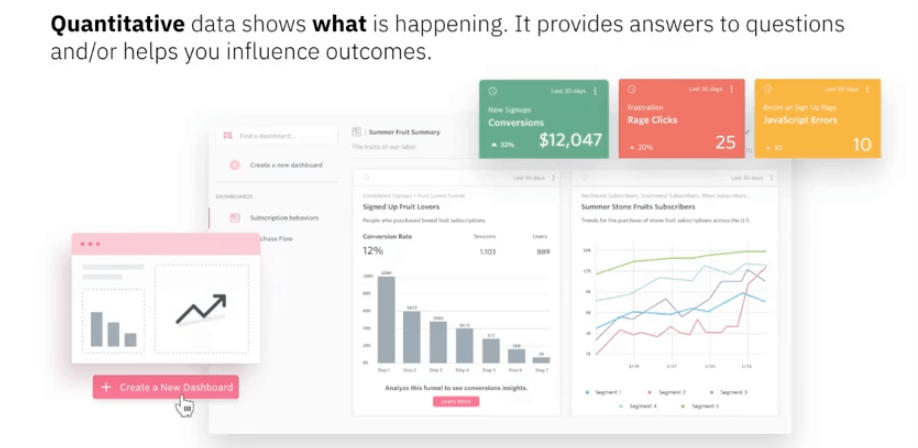
Quantitative data is a systematic approach that relies on an empirical investigation of observable phenomena. It’s what is happening on a website, it’s not subjective. They’re aggregate numbers of all of the different behaviors that are occurring.
It's important because of efficiency. You can look at a large sample size very quickly, look at that behavior and aggregate. You can share those results with different parts of your organization. Let's say you have a sales organization and there’s an annual number they want to hit so they’re reaching out to you over and over again because if you just had this one additional feature, they could sell a lot more or if you added this one thing, that's a huge upsell opportunity for them.
I've been able to go back to those stakeholders with data to not derail the cross-functional collaboration and to not sort of upset the roadmap. I'm able to justify the data-driven decision with this empirical proof of what is happening on the website. It’s valuable in driving efficiency if you think about focus and alignment because you have quick visibility with data into potential issues or successes. For example, if you hear from a support agent in your organization that conversion fell off a cliff and they're starting to get a lot of phone calls, well, you may actually see it first on a dashboard.
It also allows you to celebrate your successes. We recently rolled out new functionality in Fullstory and we've been measuring that functionality. We've been measuring adoption, we did a little promotion inside the product, but we were also monitoring usage of that feature. As we meet our goals, we’re able to reinforce the trust in cross-functional collaboration by telling everybody about it. We built this thing, we shipped it, and people are using it and getting tremendous value out of it.
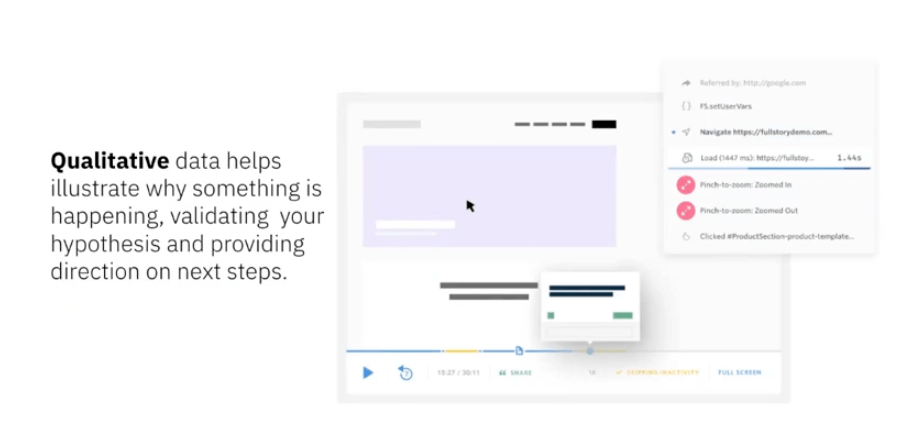
Qualitative data seeks to explain how and why a particular phenomenon or behavior operates as it does in a particular context. Qualitative data is invaluable in explaining something that numbers alone are unable to reveal. Statistics can identify trends, but the human experience and empathy, can't be ignored. When you look at the two in tandem, it's going to lead to conclusions with more accuracy and everybody gets process out of it.
For example, a whole bunch of calls are coming into the support queue about one area, a click-to-cart button failing, or somebody is trying to run a particular report but it’s failing, and you're hearing about this from support.
You can look at the quantitative data and isolate where this issue is happening. For ‘why it’s happening’, you can make educated guesses as a cross-functional team, and test all of the hypotheses to isolate why something is happening, and why a trend is occurring in that user behavior. Then, you can implement the fix because you know why things are happening. That creates a lot of additional efficiencies in an organization.
As part of a cross-functional team, it’s invaluable to show people why you're doing the work you're doing, you can prove it with the quantitative data and layering in the ‘why’ of the qualitative user experience is hugely beneficial.
To wrap up
As you're working with people whose function may not touch users every day, as the shepherd of the cross-functional collaboration, you have:
- The opportunity to help them build empathy.
- The ability to access the data through the tools.
- The ability to bring the data back into the process.
- The ability to bring it into the conversations you're having with cross-functional stakeholders about what is coming, what is on your radar, and what may be in staging.
- The ability to make sure everyone is on the same page.
In a cross-functional group, you've got CX, UX, Dev, product, engineering, marketing, and sales. With all of these different people in the game, the combination of people, process, etc.
Having the right tools and the right data is how you're going to get the most bang for your buck, and how you can also make sure you're not getting a lot of those meeting requests that could have been an email.



 Follow us on LinkedIn
Follow us on LinkedIn



